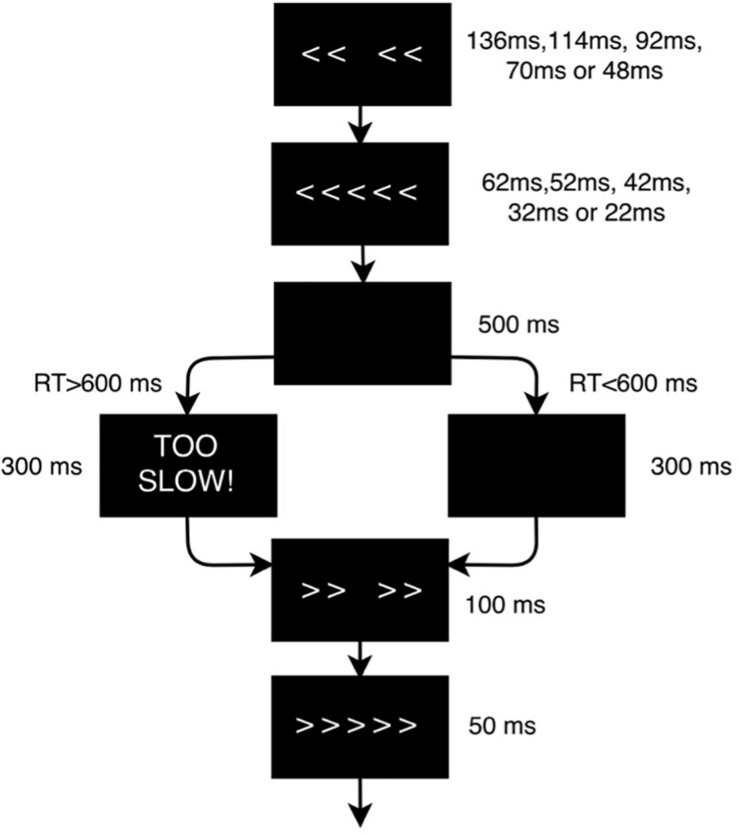FIGURE 2.
Flanker task design scheme. The flanker arrows were first presented alone for duration of 136, 114, 92, 70, or 48 ms depending on the baseline performance of each subject, and were then joined by the target arrow for 62, 52, 42, 32, or 22 ms, respectively (the duration of the stimuli was adjusted to the psychometric spot in which each subject reached a performance of 80–85%). Stimulus presentation was followed by a black screen for 500 ms. The time-window for participants’ response was 600 ms after target onset. If the participant did not respond within the response window, a screen reading ‘TOO SLOW!’ was presented for 300 ms. Participants were told that if they saw this screen, they should speed up. If a response was made before the deadline, the “TOO SLOW!” screen was omitted and the black screen remained on screen for the 300 ms interval. Finally, each trial ended with presentation of the fixation cross for an additional randomly chosen duration (200, 300 or 400 ms) in order to avoid any habituation or expectation by the subject. Thus, trial duration varied between 1070 and 1400 ms.

